How To Beat The Dreaded Dad Bod & Dispel The All-Or-Nothing Mindset
- Brainz Magazine

- May 24, 2022
- 11 min read
Written by: Alex Carter, Executive Contributor
Executive Contributors at Brainz Magazine are handpicked and invited to contribute because of their knowledge and valuable insight within their area of expertise.

Fatherhood has taught me A LOT in the last 6 months.
Some days I feel like it's ready to smack me in the face with a frying pan!
But every day, it's forced me to step up, reassess and rebalance all of the competing priorities in my life, no more so than in the last 3 months, as I embarked on my own physical transformation.
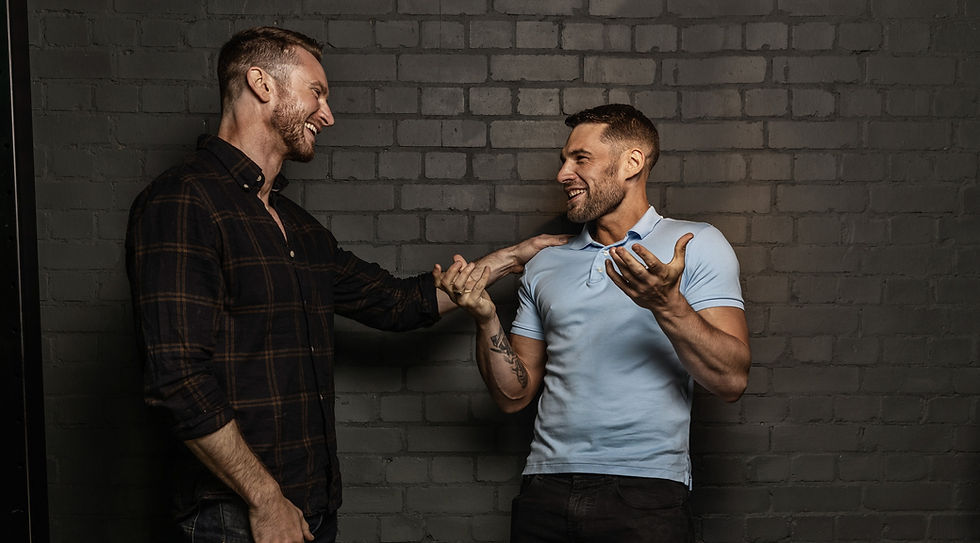
When I first did a 12-week transformation back in 2016, I did it because I wanted to push myself, to see where my own physical limits were. I studied the ‘science’ of physique development and approached it very methodically, almost akin to that of a bodybuilder.
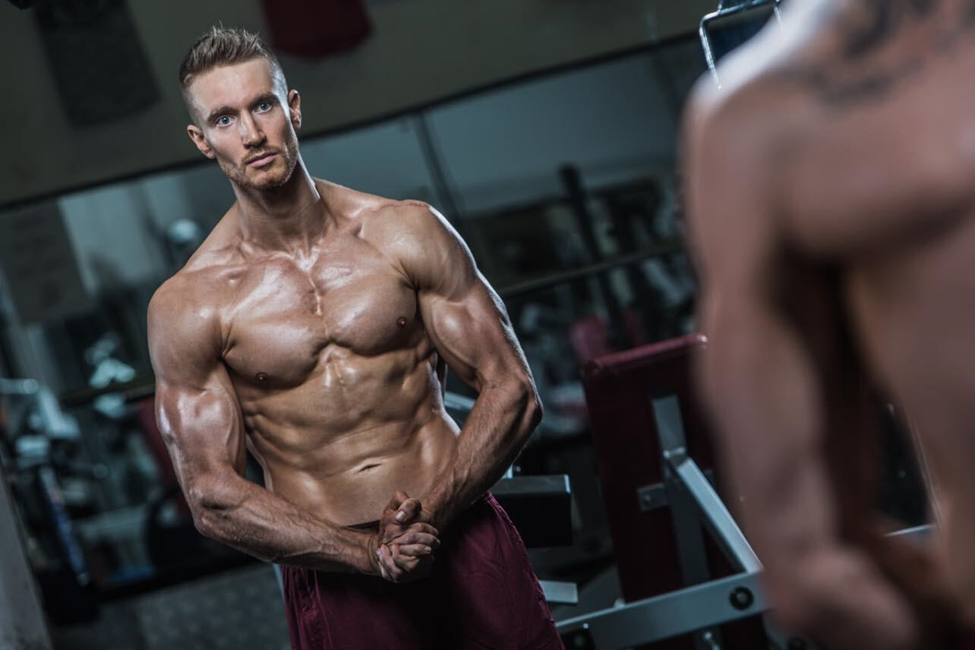
Me back in 2016, water depleted, after my 12-week' body builder' style transformation]
I was the master of my own schedule, and I relied heavily on the ‘All-or-nothing mindset.’ That was to say, I was either going to get the best transformation possible or fail trying.
I had a girlfriend I had to consider (now my wife), but if I needed to go to the gym after finishing work at 7.30 pm, that was what I was going to do!
Sure I was still working relatively long hours, but the mindset was VERY different to how I approached the last 3 months where I embarked on a similar physical feat, but this time with a very, very different set of tools.
How did I exercise?
Apart from the last 2 weeks where I did ramp up the intensity, I was exercising just 4 times a week for up to 45 minutes.
I was training specifically for moderate amounts of muscle gain but with the primary focus being on fat loss and energy optimization so that I could get more done in my day and enhance productivity.
What type of training is best for Fat Loss whilst optimising energy?
I get asked this question all of the time, and the answer, at least for me on my transformation, was:
It depends.
Scientifically, heavy resistance training on the largest muscles groups (what we refer to as compound exercises) as well as High Intensity Interval Training is going to burn the most calories in the shortest amount of time.

This is because muscles play a fantastic role in weight loss because they are greedy calorie burners.
They are also key facilitators in keeping your hormone levels stable and, when in a state of growth, stimulate the production of important anti-aging growth hormones.
But, some days if I haven't slept quite as well (usual thanks to my 6-month-old son! I track my sleep with an Oura ring if you don't own one yet, I highly recommend it as one of the top of the range health trackers for sleep optimisation and Heart Rate Variability) or if I’d had a drink the night before, lifting heavy or pushing myself with a pulse-raising HIIT workout just wasn’t something I wanted to stomach!
In this situation, something is ALWAYS better than nothing, so a morning walk, a short 2-3 mile run, or just a few body weights exercises would be what I would focus on doing.

When you optimize your day with exercise, you operate at a higher level.
Your testosterone increases and cortisol decreases. This helps you make bolder decisions and complete tasks more efficiently. You are in effect 'buying back time' in your day. You can put this to the test with volume of tasks completed. Overall task efficiency. A number of key decisions were made or any number of work-based productivity KPI metrics.
What I used in my own Transformation as far as exercise, was the exact framework I use for my clients:
The Anytime Anywhere Framework (TM)
This gives you thousands of exercises and bespoke routines linked to your current fitness level, that can be used in any environment you encounter.
No gym because you’re travelling no worries.
A bodyweight and calisthenics routine you can do from the hotel will do the job.
Not sure how to maximize results when you do get into the gym?
The 1000s of progressive overload exercises I’ve programmed into The Anytime Anywhere Framework help me and my clients get the best workout done in the shortest amount of time, even if you don't know where to start or struggle to find more than 10 mins in your day.
And if you’re reading this thinking, for example, that sit-ups burn fat and give you a six-pack.
They don’t.
Sit-ups don't burn fat. Period.
You would have to complete 250,000 consecutive sit-ups to burn less than half a kilo (1lb of fat).
Something is always better than nothing.
BUT.
The type of exercise you do absolutely does matter. And if you want to get optimum results in less time than the last longer, you need to know what works best.

What and how did I eat on my Transformation?
Again back in 2016, when I did my first transformation, I did it following a strict bodybuilder Esque diet of tailored macronutrients.
I didn't drink for 12 weeks (bar one night where I fell off the rails heavily)
I didn't go out for dinner.
I actively avoided socializing,
I hated it.
On reflection, it really wasn't very fun.
This time I wanted to retest and enhance my own Nutritional Protocol, the exact process I coach my clients with:
The Conscious Consistency Principle (™)
Conscious Consistency is about becoming aware of what and how you are eating and starting to eat in alignment with your goals (for me, this was a small/moderate amount of muscle building and primarily fat loss).
It contains a number of simple steps, some of which are detailed below:
1. Tracking calories:
On average, people underestimate how many calories they consume by 1200 calories per day!
Maybe, like me, you’re sitting there thinking, “Yeah, but Alex, I don’t have the time, and I don’t really enjoy doing it.”
You probably didn’t enjoy that meeting with your boss last week or having to prepare that presentation for the next board meeting, but you still did it, right?
It took me, on average, 3 mins per day and gave me a massive insight into how much I was actually consuming.
The equivalent of NOT tracking calories is like trying to build a £1million business without looking at the business finances. Once.
You COULD do it, but it makes it MUCH, MUCH harder.
There were a number of times when I would eat out, and I couldn't track calories effectively.
In these situations where I’m in Restaurants or out socializing, I would take the Conscious Consistency “dual-track” approach.
Tracking my calories when I could and making informed, conscious decisions BEFORE a social event or meal out where I had LESS control.
2. Optimising protein levels
Protein is such an important macronutrient. I could talk for hours on the subject, but instead I’ll just give you the executive summary on what I did and why I did it.
Optimized protein levels to be 30-40% of total calories
Aimed for 30-50g protein per meal and circa 150g of protein per day.
This helps provides the necessary amino acids (building blocks in protein) to repair broken down muscles
Also, as a more complex food molecule, it generally helped me feel fuller for longer, so the urge to snack was significantly reduced.
Finally, it takes more energy to break it down in the gut. 60% of our calorie expenditure is spent on digestion, so by eating a higher protein diet, I was able to burn additional calories at rest.
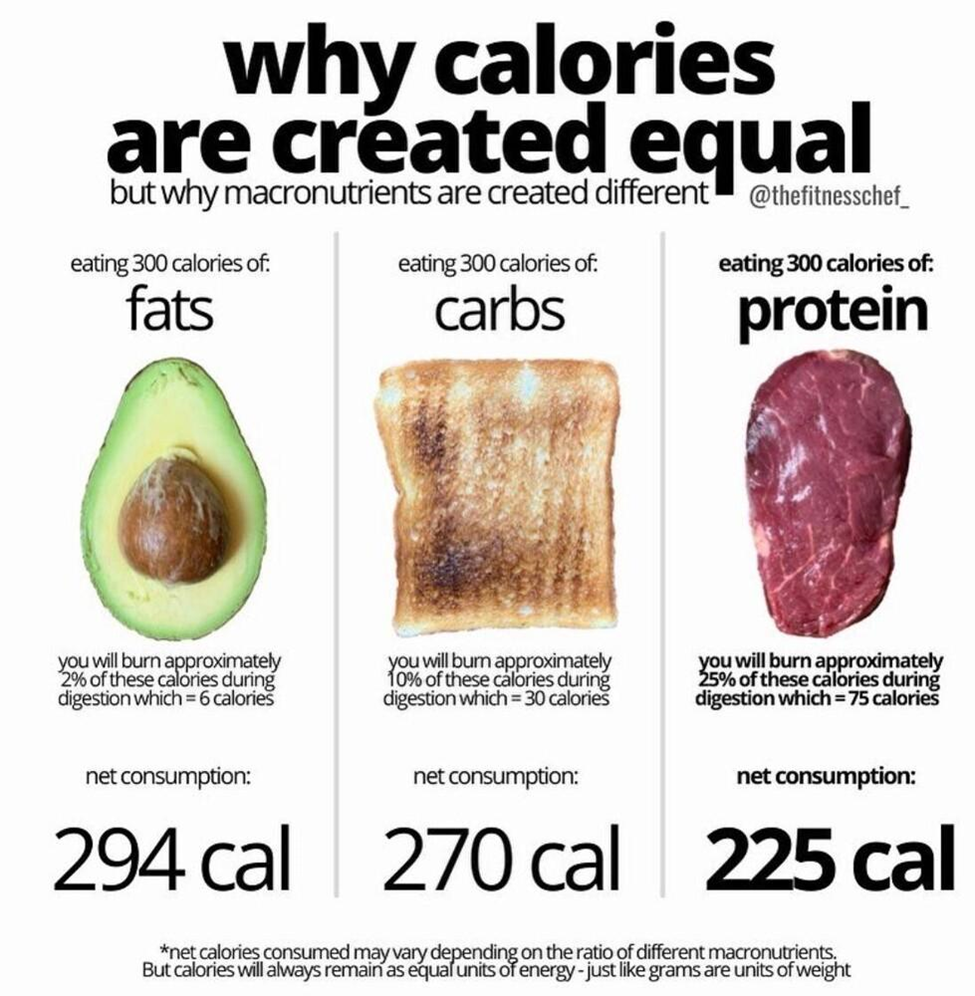
3. Eating carbohydrates predominantly before/after exercise
I'm going to massively simplify some nutritional concepts into broad themes here.
Carbohydrates aren’t bad, they’re actually the bodies preferred energy source.
The problem with carbs comes when people eat too many of them or highly processed, high GI carbohydrates. Or eat a large amount of both carbs and fats (giving the body too much fuel).
The more processed a food is, the more energy has gone into creating it and, therefore, the more energy (calories) it tends to store. It also strips out any vital micronutrients such as vitamins and minerals, which are essential for optimum energy.
Carbohydrates have a much smaller storage space in the body than fat (we can store a relatively small amount of carbohydrates in the muscles and liver) compared to our almost unlimited fat storage.
Carbohydrates that aren't stored in the muscle and liver are stored as fat, therefore having them just before (to fuel) or just after (to replenish) is generally the best time to eat carbohydrates.
Now that’s the science.
But Transformation and subsequent performance enhancements are about balancing science with sustainability and finding a system that works for you ongoing, so for me:
I still ate halo top and Oppo Ice Cream 3 times a week (sometimes daily, cough). Now, this is fairly processed, it’s not the ‘healthiest’ choice out there, BUT,
it contained 300 calories per tub as opposed to 1000 calories which, for my specific goal, made it a good choice for 12 weeks.
I also still drank twice per week, I just switched the beers for a vodka diet coke or whiskey measure and reduced overall alcohol intake.
5-6 pints (1,000 ‒ 1,300 calories) become 2 double vodka and cokes, a non-alcoholic beer and a sugar free lemonade (circa 300 calories)
Anyone that knows me knows that I love a Dominos Pizza! Again, is it the healthiest option NO, so I don’t have it all the time?
But I’d maybe have one every 2 weeks and make some vital adjustments, so it supported my goals:
I would go from Texas BBQ stuffed crust with a large garlic and herb dip, chicken kickers side and a garlic bread (a whopping 4,429 calories) to Tomato based thin crust with chicken, mushroom and jalapenos and a Franks Hot Sauce dip (oh and reduced fat cheese), totalling 1,273 calories. If I was to try and run the difference off on a treadmill at my marathon pace, it would take me 2 hours 40, and I would have to run 18.5 miles!!!
I still ate out on average once per week I would just avoid dessert, and sometimes have a starter, but I'd consciously look at the menu before.
Fitting it all in (when that voice inside says 'I just don't have the time!')
One of the struggles many of my clients first have is "fitting it all in."
They are busy.
Like really busy.
Bear in mind I work with primarily directors, VPs and CXO/CEOs who work 10-16 hour days as standard.
The biggest perceived barrier to success is time.
Yet we all have 24 hours in the day.
Sometimes people will look at me and think, it's easy for you, this is your job to stay fit!
Far from it, I stay fit in spite of my job.
I work as Health & Performance Coach with a select group of private clients (usually 8-10 at any one time).
I then also work as the marketing director and mentor for a coaching-based start-up business helping other entrepreneurs build and scale their own successful businesses.
Between these two jobs, I'm clocking up 10-12 hours as standard, primarily sitting behind a laptop, so a lot of the day, I could be forgiven for not moving.
Add on top of that the need to show up with my young son Hector (who was 6 months last week!), making time for my wife and social life on top of this, and suddenly my life may not be quite so different from my clients after all.
What is different is that I have never subscribed to the “I don’t have enough time” excuse.
I’m going to ruffle a few feathers here by saying this, but if you’re sitting there reading this thinking, you don’t have enough time to commit to your own health.
Then you need to wake up, because you’re living in a paradox.
And one that, in all likelihood, is going to be significantly shorter for you unless you fix it.
What is actually true is that it's possible to fit everything in, it just requires you to rebalance, re-energise and refocus your efforts very gradually by:
Raising you own standards of what is/isn’t acceptable. This is the core philosophy in my coaching, it’s based around making an identity shift of how you perceive yourself and the standards that that person demands of you.
Routines build in set routines and planning the personal elements of your day like you’d plan a meeting. Introducing set behaviours and habits slowly but surely and giving them time to embed.
Have a bigger vision for what success looks like in the whole of your life, not just your career or your fitness.
Connecting to your reason why turning motivation into inspiration, and aligning your new vision to your current values
Not having enough time is usually just you trying to let yourself off the hook for not showing up how you know that you could.
A limiting belief that will keep you stuck, if you allow it to.
Finding the motivation to consistently show up
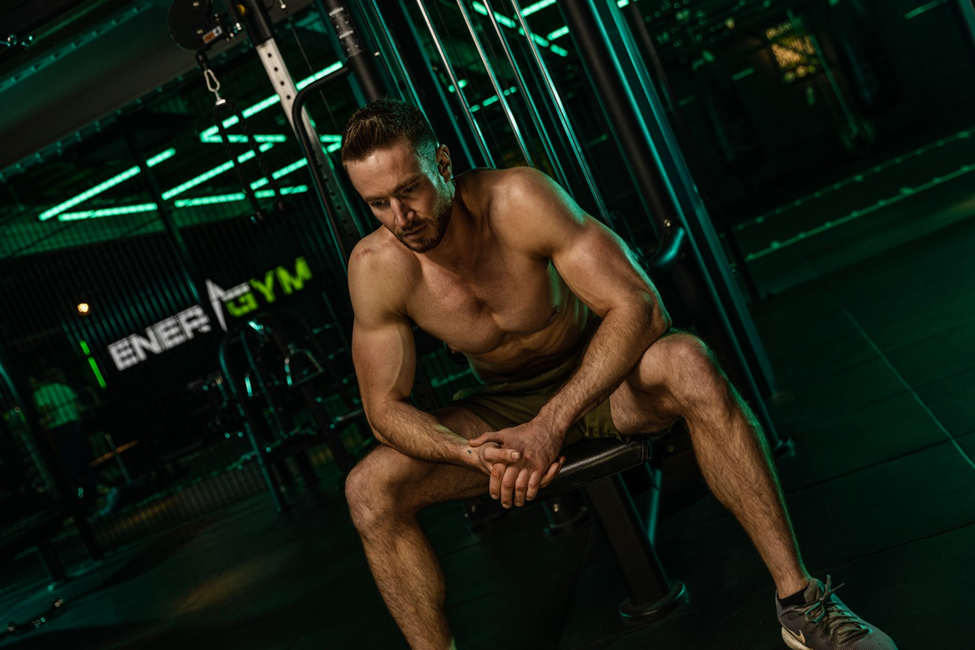
Once you get over the barrier of not having enough time, the next thing that can often stop people getting results is inconsistent levels of motivation or willpower.
We now know that willpower is a finite resource and that we have more of it in the morning and less of it in the evening.
Motivation or willpower is reliant on an external stimulus to motivate us. i.e., the motivation to do it comes from outside of you.
When you are able to shift this through coaching or reflective exercises focussing on your own psychology, you are able to move to a state of inspiration ‒ i.e., the desire to change/improve/develop comes from within.
This is a MUCH more powerful state and keeps you focussed, even when motivation has all but evaporated.
So I’ve found my reason why? I’m inspired. Zen as a monk.
How do I sustain that?
High-Performance balances discipline and control with happiness and enjoyment
It also requires a tried and tested system.
One of the systems I employ to do just this is the High-Performance Pyramid (™) depicted below:

In order to create new habits and new thinking/feeling patterns (biohacking and reprogramming your mind), you must continually think new thoughts and feel new emotions until they are 'hardwired' into the body, mind, and emotional centers.
You don’t get massive biceps from going to the gym once, just as most people don’t make change(s) stick the first time they try.
It requires you to show up consistently and build the muscle using a tried and tested method.
Surely after 12 weeks, you just go back to doing what you did before?!
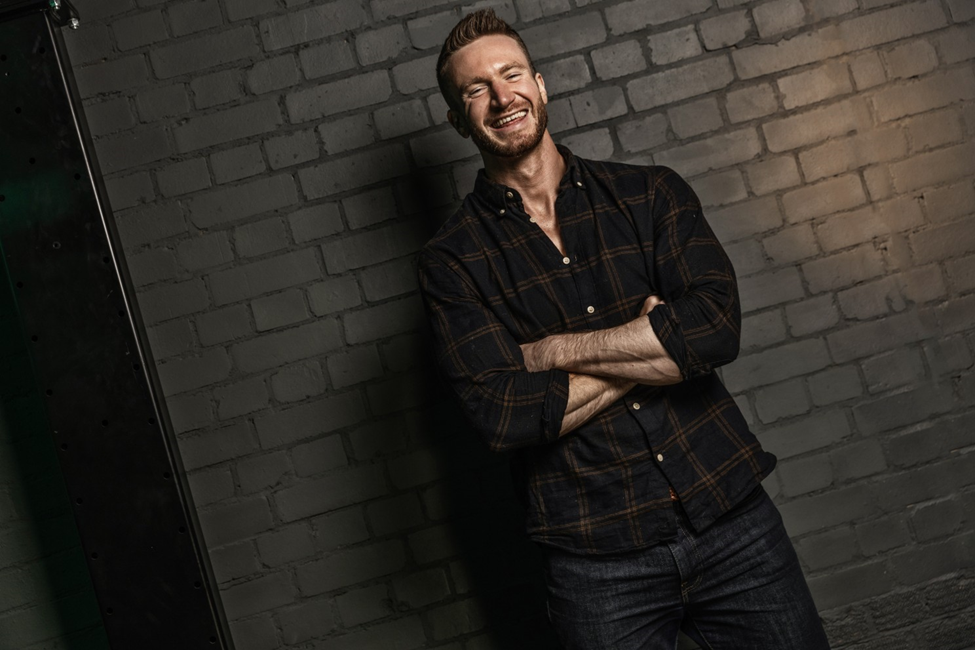
So I’ve turned up, completed the photo-shoot and made myself and my family proud (Hector at least my wife wasn't sure of the baby oil)
What now?
Part of the CEO Method (TM), one of my coaching frameworks, has 3 phases, the final part being Optimisation. The last part of Optimisation, before the cycle starts a new, is to reflect.
What went well?
What Am I most proud of?
How do I feel about my accomplishments?
What would I do differently?
What next?
The reality is that I’ve changed.
I’m not the same person I was before.
As a transformation coach and a consultant who deals with constant evolution, there’s an acceptance that I can’t go back to certain things I was doing before.
I’ve given myself a week to celebrate. During this week, there will be:
As much as I want to eat/drink, but still tracking, so I’m conscious of how much I’m consuming
Reflect and rebuild my routine, refocussing the additional time spent exercising and prepping for the shoot into my other core values business, family, and development.
More time spent relaxing and meditating and not “doing” as much, just thinking and reflecting about the magnitude of what I’ve achieved and what’s worked with the systems I’ve used, and what needs tweaking to optimise results for my clients and me moving forwards.
Deload week, allowing my joints to recover. When lifting heavy weights, every 8-12 weeks, you should complete a deload week where you just do body weights/calisthenics
How can YOU elevate your own performance to the next level?

Physical transformation is just one part of a bigger system when it comes to peak performance.
The best thing you can do to kickstart any change is make a decision a strong decision that something MUST change.
Once that decision is made, the rest becomes significantly easier.
If you're a hard-working professional; a leader who's struggling either physically, mentally, or emotionally to make the changes you feel necessary in your own life so that you are happier and fulfilled, or you want to optimise your performance both personally and professionally, then please don’t hesitate to reach out for some free advice.
To your success,
Alex

Alex Carter, Executive Contributor Brainz Magazine
Alex Carter is an Elite Coach & Mentor to directors, VPs & CXO across a broad range of the UK and US-based businesses. A challenge enthusiast at heart; competing as an Iron Man, completing a 100 mile run in under 24 hours and a 700-mile endurance triathlon - Alex has distilled his athlete mindset, coupled with a decade spent working for FTSE100 companies up to Director level and an obsession for self-development and growth into The High-Performance CEO Method (TM). His signature coaching program 'Reignite FTP' (For The Professionals) has helped 107 international clients rebalance their health, re-energize their minds & bodies, and rise to their next level.







